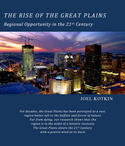Every so often, Detroit seems to pop up in our popular consciousness in a negative way. Ever since the ’67 riots, a steady stream of bad press has altered the national perception of the Motor City. Right now the city’s efforts to prevent state takeover because of its fiscal problems seems to shape discussion about Detroit. The most recent demonstration of this is the State of Michigan’s proposal to make Detroit’s Belle Isle Park, the jewel of the city’s park system, into a state park through an extended lease agreement. read more »
Policy
Faking It: The Happy Messaging of Placemaking
Picasso said “Art is a lie that tells the truth”. Nowadays, there’s less truth to that, as the creative process is increasingly about prettying up and papering over what’s broke.
More on that shortly, but first, about the breakage: it’s legitimate. Said Nobel laureate Joseph E. Stiglitz in a recent NY Times piece that plain-talks our economic conditions: “Increasing inequality means a weaker economy, which means increasing inequality, which means a weaker economy.”
That assessment—from a very smart man studying the problem—isn’t good. But in the American feel-good milieu you wouldn’t know it: “We’re coming out if it.” “Tomorrow is forever.” “Start-ups will save the U.S.” Etc. And while tone deaf, this kind of brushing off of problems isn’t new, but part of what social critic Barbara Ehrenreich refers to as America’s “cult of cheerfulness”, and it’s a “cult” that has spawned a longstanding and growing American feel-good industry. read more »
A Housing Preference Sea Change? Not in California
For some time, many in the urban planning community have been proclaiming a "sea-change" in household preferences away from suburban housing in the United States.
Perhaps no one is more identified with the "sea-change" thesis than Arthur C. Nelson, Presidential Professor, City & Metropolitan Planning, University of Utah. Professor Nelson has provided detailed modeled market estimates for California in a paper published by the Urban Land Institute, entitled The New California Dream: How Demographic and Economic Trends May Shape the Housing Market: A Land Use Scenario for 2020 and 2035 (He had made generally similar points in a Journal of the American Planning Association article in 2006). read more »
Superstorm Sandy & The Beachfront Bailout
Deadline reporters, especially in weather broadcasts from the surf line, have been wailing about “this enormous storm” or “the unfolding tragedy.” What they might also say is that hurricanes are a munificent windfall for newspapers, television stations, the federal government, construction unions, and politicians seeking reelection. In addition to classifying storms from one to five on the Saffir-Simpson scale, going forward it might also be possible to grade hurricanes as profit centers, or by the surge levels that they generate in reelection campaigns. read more »
The GOP’s Hispanic Political Malpractice
One of the more curious developments in American politics over the last two decades is the political malpractice of Republicans in dealing with Hispanic-Americans. Indeed, it now appears that the 2012 election may well be determined by the share of the Latino vote that Governor Mitt Romney is able to keep from falling into President Barack Obama’s column. read more »
The Rise of the Great Plains: Regional Opportunity in the 21st Century
This is the introduction to a new report on the future of the American Great Plains released today by Texas Tech University (TTU). The report was authored by Joel Kotkin; Delore Zimmerman, Mark Schill, and Matthew Leiphon of Praxis Strategy Group; and Kevin Mulligan of TTU. Visit TTU's page to download the full report, read the online version, or to check out the interactive online atlas of the region containing economic, demographic, and geographic data.
For much of the past century, the vast expanse known as the Great Plains has been largely written off as a bit player on the American stage. As the nation has urbanized, and turned increasingly into a service and technology-based economy, the semi-arid area between the Mississippi Valley and the Rockies has been described as little more than a mistaken misadventure best left undone. read more »
Decline Of The Asian Family: Drop In Births Threatens Economic Ascendancy
In the last half century, East Asia emerged as the uber-performer on the global economic stage. The various countries in the region found success with substantially different systems: state-led capitalism in South Korea, Singapore and Japan; wild and wooly, competitive, entrepreneur-led growth in Taiwan and Hong Kong; and more recently, what Deng Xiaoping once described as “socialism with Chinese characteristics.” read more »
Is College Worth It?
Is college worth it? The question almost seems ludicrous on its face. The unemployment rate for people with a college degree is only 4.2% versus 9.1% for people without a college degree and 13.0% for people with less than a high school education. In this economy, that should be an open and shut case. read more »
The Land Premium That's Punishing Property
High land prices have all but killed the Australian housing industry.
Lower housing starts has led to lower GST revenues (house construction attracts full GST) and lower stamp duty receipts are crippling state budgets and cruelling the chances of low and middle income earners to get a start in the housing market.
What has caused this slump in housing starts? Land prices. read more »
A Planet of People: Angel's Planet of Cities
Professor Shlomo Angel's new book, Planet of Cities, seems likely to command a place on the authoritative bookshelf of urbanization between Tertius Chandler's Four Thousand Years of Urban Growthand Sir Peter Hall's Cities and Civilization and The Containment of Urban England. Chandler produced the definitive volume of gross population figures for urban areas (cities) over millennia. Angel, takes the subject much further, describing detail how urban areas have grown over the last two centuries, both in population and continuous urban land area. The book focuses principally on population growth, urban spatial expanse, and density. read more »





















